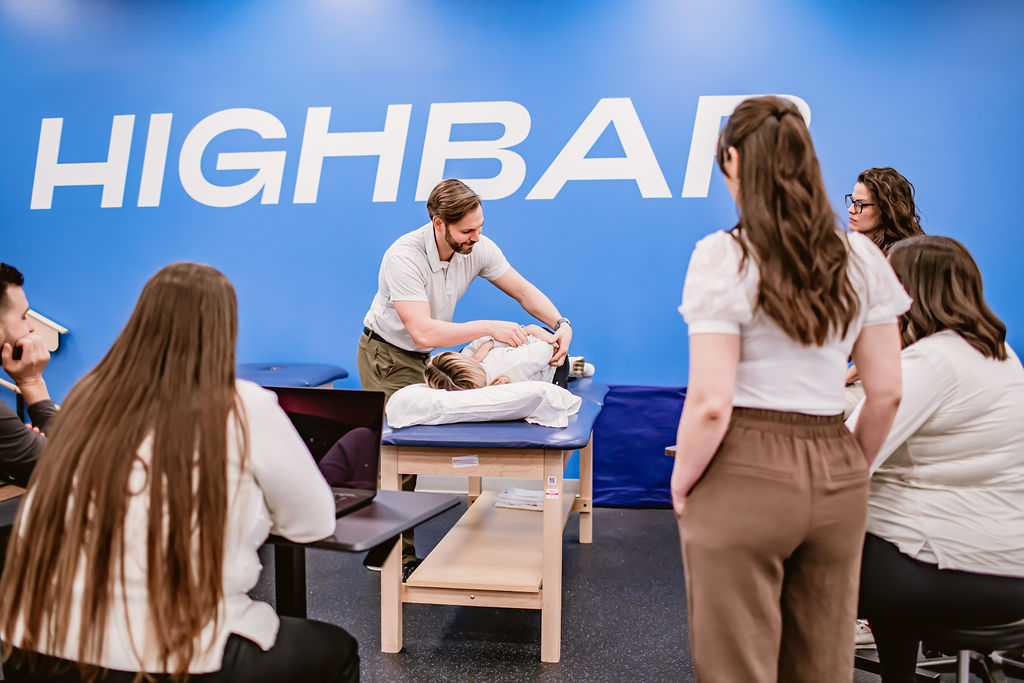Highbar Physical therapy & Health blog
Summer in New England presents unique challenges for individuals managing joint pain, arthritis, and athletes preparing for fall sports seasons. While conventional wisdom suggests warm weather brings relief from joint pain, research reveals a more nuanced relationship.
This comprehensive guide translates current research into actionable strategies, helping you navigate summer weather challenges while maintaining optimal mobility and performance throughout the season.
How Summer Weather Affects Joint Pain
The Humidity-Inflammation Connection
New England's characteristic summer humidity creates physiological conditions that can exacerbate joint symptoms. High atmospheric moisture levels trigger increased fluid retention within joints, leading to localized swelling and joint stiffness.
Research demonstrates that individuals with osteoarthritis experience significantly higher pain levels when humidity combines with elevated temperatures—a frequent occurrence during Rhode Island and Massachusetts summers. The resulting increased pressure within joints activates pain receptors and leads to inflammation that can persist for many hours.
Heat-Induced Musculotendinous Responses
Prolonged exposure to high temperatures triggers protective muscle and tendon tightening around joints. While this response serves a protective function, it can result in muscle spasms that restrict normal joint mobility and alter movement patterns.
People with chronic joint conditions often have heightened sensitivity to heat, frequently experiencing symptom flares during extended periods of hot weather. This phenomenon occurs due to altered pain processing pathways and increased inflammatory responsiveness.

Synovial Fluid Dynamics and Joint Lubrication
Temperature fluctuations influence the composition of synovial fluid, the specialized lubricating substance within joint spaces. Heat exposure can reduce synovial fluid viscosity, decreasing the protective cushioning and increasing friction between joint surfaces.
These changes contribute to increased joint pain and potential cartilage stress during movement, which explains why people may feel increased joint stiffness despite the common belief that warmth universally benefits joints.
Barometric Pressure Variations and Pain Perception
New England's summer weather patterns frequently involve rapid atmospheric pressure changes, particularly preceding thunderstorms. These barometric fluctuations alter the pressure within joints and have been found to increase pain in people with knee osteoarthritis.
Understanding this weather-pain correlation helps patients recognize that symptom changes often reflect environmental factors rather than disease progression or new injury development.
Dehydration and Joint Health Mechanisms
Even mild dehydration, commonly occurring during hot New England summers, significantly impacts joint health. A 1-2% decrease in total body water can impair the production of synovial fluid and increase pain intensity.
Additionally, dehydration elevates circulating inflammatory markers, which can amplify joint pain perception through a mechanism called central sensitization. For individuals with gout, even mild dehydration combined with summer's typical dietary changes—including increased alcohol consumption and purine-rich foods at seasonal gatherings—creates optimal conditions for flare-ups of this condition.
Lifestyle Factors Influencing Summer Joint Pain
Activity Pattern Modifications
Summer's extended daylight hours and favorable outdoor conditions often encourage increased physical activity. While regular exercise provides many benefits, an abrupt increase can lead to pain or injury, particularly in people with arthritis or previous injuries.
Conversely, excessive heat avoidance may result in activity reduction, leading to muscle weakness, joint stiffness, and deconditioning. The optimal approach involves systematic activity progression that allows for appropriate adaptation while maintaining joint mobility.
Sleep Quality and Pain Sensitivity Interactions
Elevated ambient temperatures and prolonged daylight exposure can significantly disrupt sleep. High bedroom temperatures interfere with thermoregulation, and extended light exposure suppresses melatonin production.
Research consistently demonstrates that poor sleep quality directly correlates with increased pain sensitivity and elevated inflammation. Individuals with chronic joint conditions report 40% greater pain intensity following nights of disturbed sleep.
Nutritional Factors and Inflammatory Pathways
Summer diets often shift, with increased social eating, processed food, and alcohol consumption, all contributing to systemic inflammation and increased joint pain. These dietary changes, combined with environmental heat stress and dehydration, can increase pain perception through pathways affecting both local joint health and central nervous system sensitivity.
Athletic Considerations: Pre-Season Training Challenges

Heat Stress and Training Load Management
High school and college athletes initiating pre-season training during late summer face factors that can impact joint health. The combination of rapid training increases, environmental heat stress, and competitive pressure requires careful consideration.
Progressive Load Adaptation: Athletes frequently demonstrate dramatic training intensity increases during pre-season. This rapid increase can overwhelm the ability for joints to adapt, particularly when combined with heat stress, creating a heightened risk for overuse injuries.
Thermoregulatory Challenges: Intensive training in elevated temperatures places substantial demands on cardiovascular and thermoregulatory systems. Heat stress can impair neuromuscular coordination, reduce strength and power output, and compromise proprioceptive feedback—all factors increasing injury risk.
Surface-Specific Heat Considerations
Training surface selection significantly impacts both heat exposure and joint loading patterns. Dr. Molly Douglass, PT, DPT, Board Certified Orthopedic and Sports Specialist at Highbar Physical Therapy and official physical therapist for Rhode Island Football Club, emphasizes:
"Pre-season training heat demands equal attention to the physical drills themselves. Synthetic turf surfaces can reach temperatures 20–30°F higher than natural grass, accelerating dehydration rates and contributing to joint stiffness and muscle cramping. Athletes should arrive pre-hydrated, maintain fluid intake every 15 minutes during training, and utilize shaded recovery periods throughout the initial weeks of practice to optimize joint function and muscle performance."
Evidence-Based Training Progression
Dr. Erica Manchester, PT, DPT, Board Certified Orthopedic Clinical Specialist and Clinic Director at Highbar Physical Therapy in South Kingstown, Rhode Island, provides essential guidance for summer exercise enthusiasts:
"Summer weather typically inspires increased exercise motivation, but rapid progression often leads to injury. The 10% rule exists because the human musculoskeletal system requires 7-14 days to initiate meaningful adaptations to increased loading demands. For running or walking programs, increase total weekly mileage by maximum 10% increments. This principle applies equally to resistance training—follow similar progression patterns for total training volume. Gradual session duration increases of 10% prevent the dramatic activity jumps that commonly result in overuse injuries."
Comprehensive Athletic Development
Dr. Calin Butler, PT, DPT, Physical Therapist and Clinic Director at Highbar Physical Therapy in Cranston, Rhode Island and Boys Program Director and Head Coach for RI Blast Volleyball, emphasizes:
"Summer represents crucial preparation time for athletes across all sports. For optimal heat tolerance and performance, controlling training intensity and maintaining proper hydration provide the foundation for appropriate fuel delivery, performance optimization, and recovery facilitation. Indoor training alternatives—including yoga, resistance training, and mobility work—offer heat avoidance while discovering new performance challenges. My consistent message to athletes remains: consume quality nutrition, maintain optimal hydration, prioritize body care, and avoid unnecessary risks."
Evidence-Based Summer Joint Pain Management Strategies
Environmental Temperature Control
Optimal Activity Timing: Schedule outdoor activities during cooler periods (before 11 a.m. or after 4 p.m.) when temperatures and UV radiation intensity are minimized.
Strategic Clothing Selection: Choose lightweight, moisture-wicking fabrics that facilitate heat dissipation. Light-colored clothing reflects radiant heat more effectively than dark colors, reducing overall thermal load.
Active Cooling Interventions: Use cooling towels, fans, and air conditioning to maintain comfortable core temperatures. Cool (not cold) water applications provide immediate relief without triggering muscle tension responses.
Hydration Optimization

Baseline Fluid Requirements: Maintain daily fluid intake of 8-10 cups for most adults, with increases during periods of sweating or physical activity.
Athletic Hydration Strategies: Athletes require more sophisticated fluid management:
- Pre-Training Protocol: 16-20 ounces of fluid 2-3 hours before training, plus 6-8 ounces 10-15 minutes before activity initiation
- During Training: 6-8 ounces every 15-20 minutes during prolonged sessions
- Post-Training Recovery: Replace 150% of fluid losses (determine through pre/post-training weight measurements)
- Electrolyte Replacement: Sports beverages become essential during sessions exceeding 60 minutes or in extreme heat conditions
Electrolyte Balance Maintenance: Include sodium, potassium, and magnesium replacement during extended outdoor activities through coconut water, diluted fruit juices with added salt, or sports beverages.
Movement and Exercise Modifications
Aquatic Exercise Programs: Swimming, water aerobics, and aquatic therapy provide excellent low-impact alternatives that reduce joint loading while maintaining cardiovascular fitness. Rhode Island and Massachusetts coastal areas and community pools offer numerous opportunities. Plus, Highbar Physical Therapy offers aquatic therapy.
Climate-Controlled Training Environments: Utilize air-conditioned fitness facilities, shopping centers, or community centers for walking and training during peak heat periods.
Structured Activity Pacing: Ensure evidence-based rest intervals during prolonged activities. Research supports 50:10 work-to-rest ratios for maintaining joint comfort and preventing heat-related fatigue.
Sleep Environment Optimization
Temperature Regulation: Maintain bedroom temperatures between 65-68°F using fans, air conditioning, or cooling mattress technologies. Blackout curtains prevent excessive heat accumulation in rooms from direct sunlight.
Circadian Rhythm Support: Establish consistent sleep-wake schedules despite seasonal daylight variations. Limit blue light exposure before bedtime and consider cooling showers as part of evening routines.
Bedding: Select moisture-wicking sheets and sleepwear that facilitate heat loss and prevent overheating at night.
Anti-Inflammatory Nutrition Strategies
Local Seasonal Produce: Choose deeply pigmented fruits and vegetables from Rhode Island and Massachusetts sources, including blueberries, cherries, and leafy greens for antioxidants and anti-inflammatory effects.
Omega-3 Fatty Acid Sources: Cold-water fish, walnuts, flaxseeds, and chia seeds support joint health as they help minimize inflammation.
Limiting Pro-Inflammatory Foods: Reduce processed foods, refined sugars, and trans fats, which promote inflammation and worsen joint pain.
Joint Protection and Support Strategies
Utilize braces, compression garments, taping, and supportive footwear to reduce joint loading during activities. Physical therapists conduct comprehensive evaluations to recommend appropriate devices and provide proper usage training.
When to Seek Professional Care
A physical therapist's evaluation becomes essential when joint symptoms interfere with daily functioning or quality of life. Specific indicators warranting attention include:
- Inflammatory Signs: Joint swelling, redness, or increased warmth
- Functional Impairment: Pain disrupting sleep, occupational activities, recreational or athletic pursuits
- Progressive Morning Stiffness: Stiffness lasting longer than 30 minutes after awakening
- Range of Motion Limitations: Decreased mobility affecting activities of daily living
Timely physical therapy reduces the likelihood of requiring surgical interventions or long-term pharmaceutical management. Our Rhode Island and Massachusetts locations provide convenient access to evidence-based joint health care.
Optimizing Your Summer Joint Health

Joint pain doesn't have to compromise summer enjoyment or limit meaningful activities. Through evidence-based management strategies, proactive intervention, and professional guidance when appropriate, you can maintain an active, fulfilling lifestyle regardless of environmental conditions.
Successful joint health management involves understanding individual trigger patterns, implementing appropriate preventive measures, and seeking professional support when symptoms interfere with daily functioning. At Highbar Physical Therapy, our Rhode Island and Massachusetts locations provide comprehensive, patient-centered care designed to optimize joint health and functional mobility throughout all seasons.
Ready to optimize your joint health this summer? Contact Highbar Physical Therapy today to schedule a comprehensive evaluation with our expert clinical team. We'll develop a personalized, evidence-based treatment plan that addresses your specific needs and goals, enabling you to maintain an active, comfortable lifestyle throughout the season.
Serving Rhode Island and Massachusetts communities with cutting-edge physical therapy care. Contact us today to learn more about our specialized joint health optimization programs.





